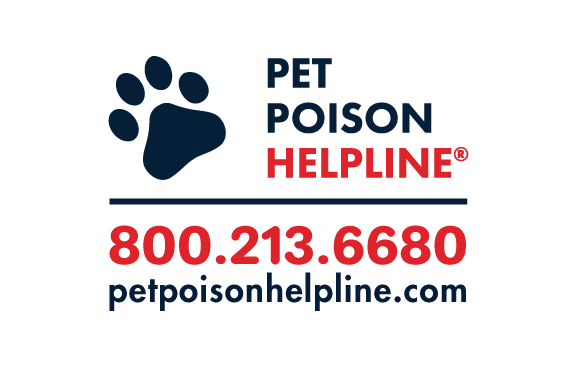Can A Pregnant Woman Exposed To Paint In Auto Warehouse Have Child Who Has Seizures
What are paints and varnishes? 
Paints, varnishes, and stains are available in a wide multifariousness of formulations, many of which are unsafe to dogs and cats.
H2o-based paints include latex, acrylic, tempera, and poster paints. Oil-based paints are typically used where more durable coverage is required. Varnish and stains are forest sealants or pigments made from a combination of resins, oils, and solvents.
Why are paints and varnishes unsafe to dogs and cats?
Pets are naturally curious. They may walk through freshly painted or varnished areas and chew on or lick paint/varnish and supplies. If paint or varnish gets on the pet's skin, fur, or paws, small amounts tin can be ingested while cocky-training. Inhalation of fumes may occur when pets are enclosed in poorly ventilated areas that have been recently painted/varnished or incorporate open containers of paint or varnish.
Atomic number 82-based pigment is the near serious health concern in pets. Pb-based paints have been banned in the United states since 1978, merely they are not regulated in all countries. Older buildings, painted products from not-regulated countries, and some oil-based artists' paints may contain led. Ingestion of pb-based pigment can cause gastrointestinal irritation, neurologic effects, and interfere with crimson blood prison cell production. Poisoning most commonly occurs when pets chew on surfaces containing lead-based paint or ingest flakes or fries of peeling paint. While a single ingestion of pb-based paint can result in poisoning, repeatedly ingesting dried pigment is more likely to upshot in serious furnishings. Pets are frequently sentinels for lead exposure in the abode. If a pet is diagnosed with atomic number 82 poisoning, the humans in the household should likely be tested also.
In most cases, water-based paints are unlikely to cause more than gastrointestinal upset or pare irritation. Some latex paints contain low concentrations of ethylene glycol (anti-freeze). Ingestion of very large amounts of these paints can cause gastrointestinal upset, neurologic signs and even kidney failure.
Oil-based paints and varnishes incorporate solvents that can be inhaled into the lungs and crusade difficulty breathing. Vomiting and diarrhea are also normally associated with the ingestion of oil-based paints.
All paints and varnishes have the potential to release fumes which can crusade respiratory and eye irritation when present in poorly ventilated areas.
How much pigment or varnish is poisonous to dogs and cats?
A small taste or touch of paint is unlikely to cause significant symptoms. Unless the pigment contains heavy metals, information technology is rare that a pet would drink enough undiluted paint to cause serious poisoning. A chip of lead-based paint that is the size of a thumbnail tin comprise 50-200mg of lead. This is plenty to cause poisoning in dogs that weight up to twenty pounds. Eating several chips of paint can hands poison a dog the size of a Labrador Retriever. Pregnant animals or young animals are at a greater risk for lead poisoning.
What do I do if my dog or cat eats paint/varnish or inhales pigment/varnish fumes?
If you doubtable that your pet has been exposed to paint or varnish, contact your veterinarian or Pet Poison Helpline, a 24/7 brute poison control center at 1-800-213-6680 immediately for treatment recommendations.
Never attempt to induce vomiting or administer medications to your pet unless specifically instructed to do and then by your veterinary. Attempting to induce vomiting may cause paint/varnish to be inhaled into the lungs, resulting in much more serious complications.
Rinsing your pet's mouth with lukewarm water, encouraging your pet to drink water, or offer a small snack may be helpful to dilute the paint or varnish in the stomach and reduce the risk of tummy upset.
Paint/varnish on the pare or fur can be washed off with mild liquid dish soap or carefully trimmed with clippers. Scissors should not exist used, because you lot chance cutting the skin. Never utilize paint thinners, mineral spirits, or other products on the skin without consulting your veterinarian or Pet Poison Helpline first. These products can cause severe peel irritation and pain. In most cases, leaving some pigment on the fur is preferred to causing further injury.
What are the signs of paint poisoning in a dog or cat?
Signs of toxicity depend upon the type of pigment or varnish ingested. The most common signs are airsickness, diarrhea, low, and lack of appetite. If pigment or varnish is aspirated into the lungs, pets may develop fast or labored breathing and a royal or bluish color to the gums.
With very large ingestions of ethylene glycol-containing paints, pets may develop lethargy, incoordination, and tremors They may also stop eating, drink more or less than usual, and accept increased or decreased urination. Nonetheless, the ethylene glycol concentrations of these types of paints is typically quite depression and ingesting a toxic amount would be rare.
Pets that ingest lead-based paints may have vomiting, diarrhea, lack of appetite, a drunken gait, tremors, seizures, blindness, weakness, pale gums, increased heart rate, and difficulty animate.
How volition my veterinarian diagnose pigment poisoning?
Most cases are diagnosed in pets that take the expected signs and a known or suspected exposure to paint or varnish. Chest radiographs may be needed to look for testify of paint or varnish aspiration into the lungs. Abdominal radiographs to look for lead in the stomach and intestines may be recommended. Blood work may be performed to evaluate kidney function, appraise red blood cells, or decide lead levels.
Is at that place an antitoxin for paint toxicity in pets?
An antidote for most paint and varnish ingestion is not available or necessary. If pb poisoning occurs due to paint ingestion, drugs called chelating agents can exist used to bind the pb and allow it to be removed from the body. In the rare case that plenty paint was ingested to cause ethylene glycol poisoning, early treatment with a drug called fomepizole or ethanol can foreclose damage to the kidneys.
How should an animal with paint exposure or poisoning be treated?
Treatment for paint exposure depends upon the type and amount of paint ingested.
Induction of vomiting post-obit ingestion of paint and/or varnish is not recommended. Vomiting increases the gamble that paint can be inhaled into the lungs and cause difficulty breathing.
Pets that develop vomiting or diarrhea are ofttimes treated with fluids under the peel, anti-nausea medication, probiotics, or gastrointestinal protectants. If severe gastrointestinal or respiratory signs occur, hospitalization with intravenous (Iv) fluids, antibiotics, and/or oxygen supplements may be necessary.
In the rare case that plenty pigment was ingested to crusade ethylene glycol poisoning, hospitalization will be needed. Treatments often include intravenous fluids, ethanol or fomepizole, dextrose supplementation, and monitoring of blood piece of work to assess kidney function.
Treatment for atomic number 82 poisoning depends upon the signs that develop. Intravenous fluids, anti-nausea medication, gastrointestinal protectants, muscle relaxants and medications to command seizures may be used. Drugs to bind atomic number 82 and let its removal from the torso (chelating agents) are often necessary.
Tin can pets recover from paint poisoning?
Full recovery is expected following most paint or varnish exposures. Pets that develop lead poisoning or ingest ethylene glycol- containing pigment may develop more serious complications. Even in these cases, the outlook for total recovery is expert with early on treatment. Delayed treatment can cause long-term organ harm and even expiry.
How tin paint or varnish poisoning be prevented?
Store paint and varnish products in closed containers out of the pet's reach. Exercise not leave pigment/varnish or items coated with wet paint/varnish where unattended pets are present. Curious pets may explore containers and painting supplies. It is not uncommon for pets to chew through closed containers or chew on paint brushes and other painting supplies. Keep in mind that pets can get on counters or knock items off counters and tables. Do not presume a pet will avert eating the paint/varnish merely considering information technology has a bad taste. If pigment or varnish is spilled, confine all pets in another area of the home until the product has been cleaned upward. Assure the expanse where the paint/varnish was used is well ventilated and aroma-gratuitous prior to assuasive pets dorsum into the area. Pay close attention to curious young animals and especially cats who tin bound and climb on higher surfaces. Home remodeling may betrayal lead-based paint dust and fries that these animals find irresistible to ingest.
Prevention of lead poisoning from pigment requires careful attention to the dwelling environment. In older homes, exist sure to remove whatsoever loose paint, pigment, fries or paint grit from areas to which the pet volition exist exposed. Habitation exam kits to appraise for lead pigment are available. If lead pigment is detected, consider a certified risk assessment to determine whether properly maintaining the pigment in identify or complete removal of the atomic number 82-based paint is almost appropriate. Removal of lead-based paint should not be attempted without proper training and protection.

Pet Poison Helpline, an animate being poisonous substance command eye based out of Minneapolis, MN is available 24/7 for pet owners and veterinary professionals that require aid treating a potentially poisoned pet. The staff provides treatment communication for poisoning cases of all species, including dogs, cats, birds, small mammals, large animals and exotic species. Every bit the most cost-effective option for animate being poison control intendance, Pet Poison Helpline'south fee of $65 per incident includes follow-up consultations for the duration of the toxicant example. Pet Toxicant Helpline is available in North America by calling 800-213-6680. Additional information tin can be found online at www.petpoisonhelpline.com
Source: https://vcahospitals.com/know-your-pet/paint-and-varnish-poison-alert-for-dogs-and-cats
Posted by: hassettbeeirekee93.blogspot.com

0 Response to "Can A Pregnant Woman Exposed To Paint In Auto Warehouse Have Child Who Has Seizures"
Post a Comment